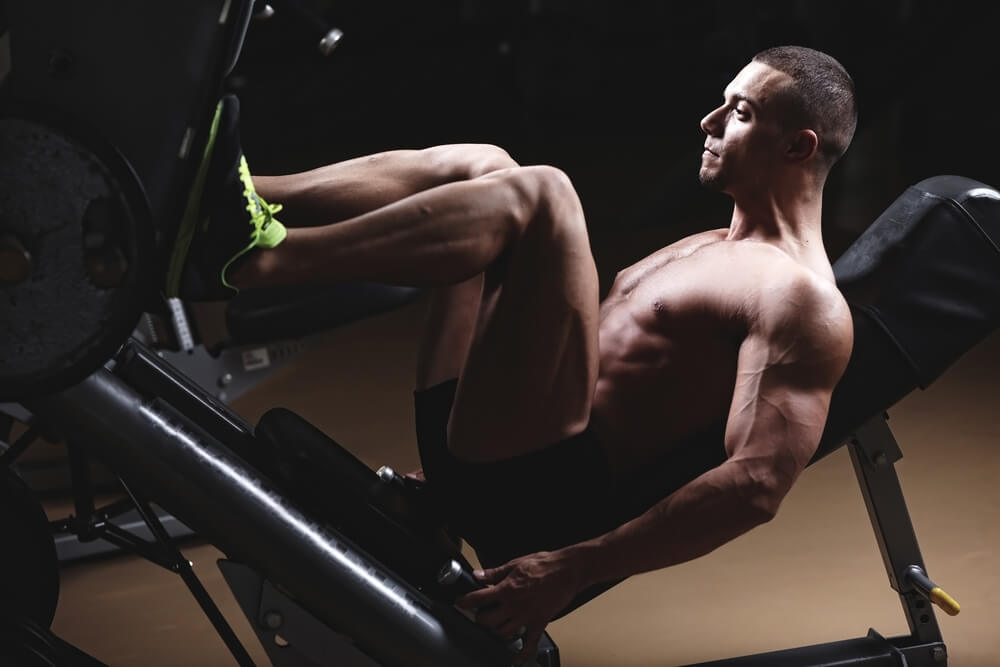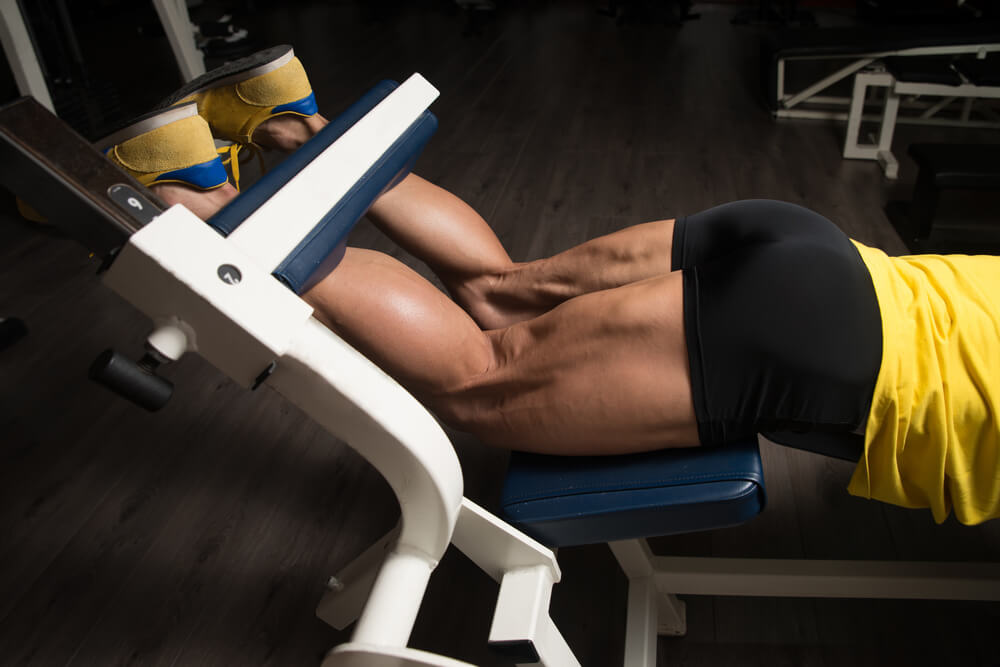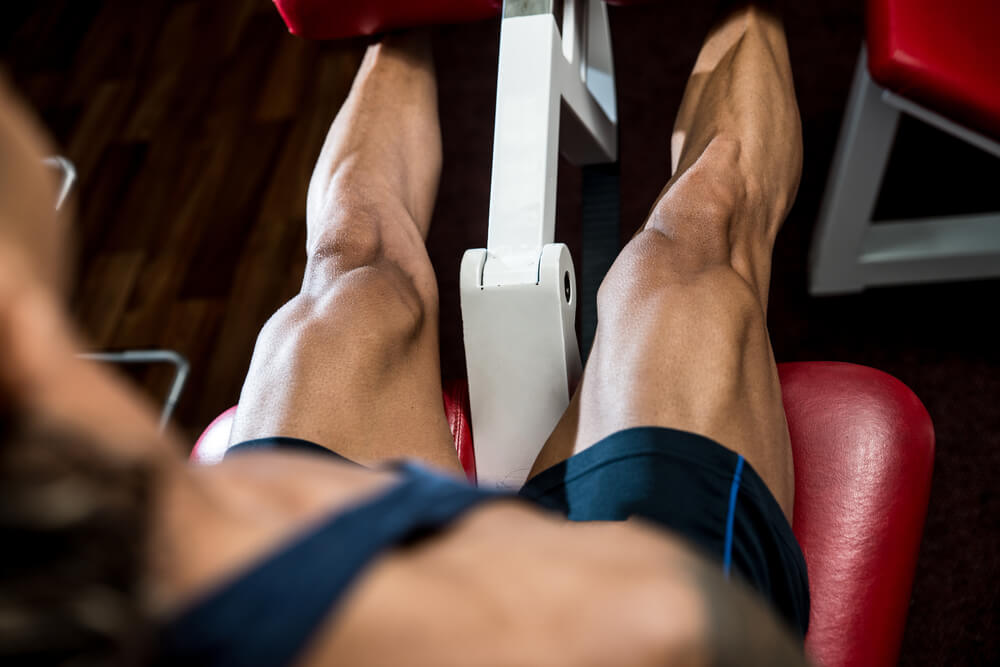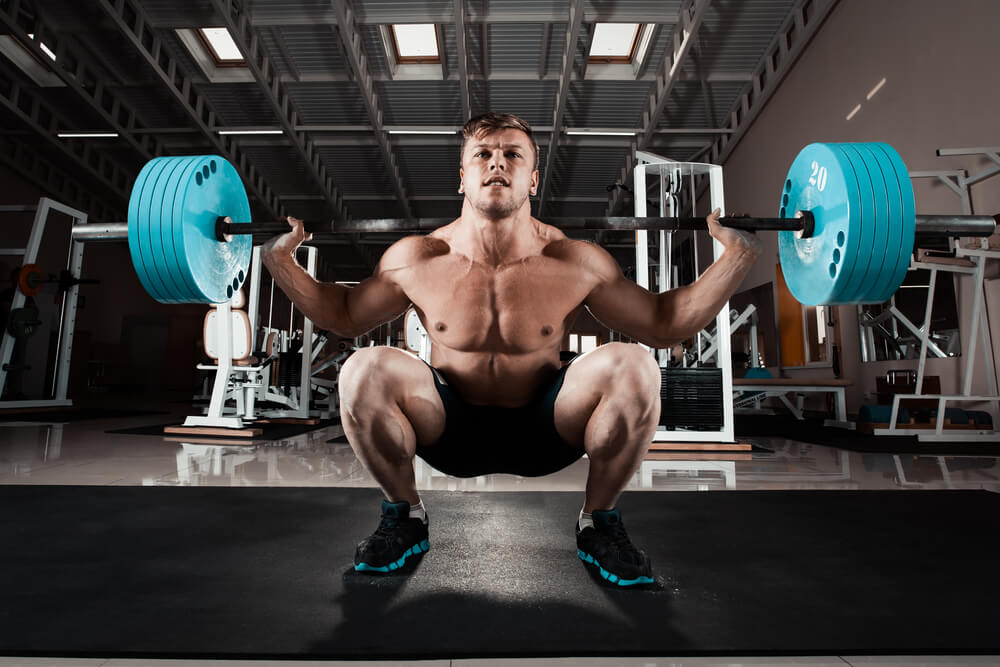
You’ve pushed. You’ve pulled. But, what does push pull legs split routine all mean? How does it relate to your legs? You’ve got questions. We’ve got answers. And, they’re all right here.
You have probably heard of pushing versus pulling days before. They’re just as common as any other kind of day (chest and back, shoulders and arms, legs, etc) an avid lifter would do, but what does it really mean and how does it fit into a gym routine and a leg workouts for mass?
Lucky for you, I have an answer.
As a basic rule, pushing motions involve moving something away from your body. Pulling motions commonly move things closer to your body. For example, a bench press pushes a barbell away from your body, whereas a bent over row pulls a bar into your chest.
When it comes to the legs, it’s a bit harder to picture, but I’ll break it down for you. Although a squat isn’t pushing something further away from you, it is using your legs to move a bar further away from the floor. As for the posterior chain (the back side of your body, namely your glutes and hamstrings in this example), something like an RDL (or deadlift) that places emphasis on the hamstrings, the hamstrings and glutes have to work together to pull your torso away from the floor, and thus the bar moves with the torso.

There’s A Difference Push Pull Legs Split
There are a few different ways that lifters separate pushes and pulls. Some will do supersets of a pushing and a pulling exercise, like a squat with an RDL. Others will do all their pulling motions on one day, such as hamstring curls, deadlifts, and glute-ham raises, then all their pushing motions on another, like squats, lunges, and step-ups. Lastly, another common way is to perform all the pushing motions first, then do the pulling motions or vice versa, all in the same workout.
What’s the most effective plan?
The answer isn’t that simple. For the super setter mentioned, this plan works on the theory that if the lifter performs a pushing motion, blood gets pumped into the muscles used, and on the subsequent exercise, the blood has to first return to the heart and lungs to pick up oxygen, then return to the same area of the body, but this time to the pulling muscles.
Bodybuilders would describe the resulting sensation as a pump. Some exercise “experts” (quotes because I’m not so sure how expert they are) say that it makes your heart work harder, increasing the calorie burn. Other theories say that it causes more intramuscular damage (meaning you need to do less work to get the same effect) to do such supersets, although there is no research to support it.
However, research does support doing all pulling motions on one day and pushing motions on another. It has been theorized and studied that getting your brain and nervous system (the primary determinant of strength) thinking pull will limit force production (meaning it will decrease how much weight you can lift) on the pushing motions if you were to superset them.
The studies so far have had small sample sizes (very few subjects), so that is one criticism. Even still, most of the research says that it’s detrimental to do pushing and pulling motions on the same day. The takeaway is: If strength is your goal, it’s likely smartest to separate your pushing and pulling motions into different days.
Lastly, if you don’t go to the gym more than two or three times a week, doing all your pushing and pulling motions in the same day might be more your speed. It is time-consuming to do all the pulls then all the pushes (or vice versa).
With that said, the advantage is you can change your mindset from pull to push at the point at which you’re switching from one to the other. The theory is that you won’t lose force production because of that mindset change. This has not been tested (at least to my knowledge), but it makes sense and anecdotally, as a strength coach, I have seen athletes benefit from this in practice.
But how does this all apply to the legs?
You can separate lots of leg exercises into pushes and pulls. For example, pushes would include squats (both front and back), lunges and step-ups. Pulls would be things like deadlifts, RDLs and hamstring curls. Of course, there are many more exercises that fit each group, but those are just a few examples. Choosing a plan or split that works for you is all based on your goal.

What Are Your Goals And Plans?
Let’s address strength-related goals first. As a strength coach, my advice to increase your strength is to follow a Hatch-style split and do all pulling motions one day and all your pushes the next. For example, a leg pull day would look like this:
Hang Clean 4×3
Deadlift 5×5
Romanian Deadlift 3×8
Glute-Ham Raise 3×6
These are all leg pulls (okay, so the hang clean involves your upper body, but it’s mostly a leg and hip thing), all of them are effective and all will help you get stronger. You’re in and out of the gym in 45 minutes or less and you don’t have to do it again until next week. So if you work out Monday, Wednesday, Friday and Saturday (pro tip: If you work out four days a week, that’s the schedule I advise), you won’t have to do that workout again until the next Monday.
A sample push day would look something like:
Back Squat 5×5
Vertical Jump 4×3
Walking Lunge 3×8 per leg
High Step-Up 3×5 per leg
And there’s your leg pushing day. You wouldn’t have to do this workout again until the next Wednesday (pro tip: I also advise doing the leg days on consecutive workouts). Your Friday and Saturday can be your beach muscle days, upper body pulls on the Friday and upper body pushes on the Saturday.
Next, we’ll address a hypertrophy (muscle growth) goal. Back when I was a young, dumb meathead (high school and first-year college student just starting my strength and conditioning education), this is how I trained. We’ll do the pulling day first, just to keep it consistent.
Deadlift 5×5
Prone Hamstring Curl 4×12
Single-Leg Hamstring Curl 4×12 per leg
Glutes Ham Raise Negatives 3×10
That workout will make you very sore. You’ve been warned. Sadly, muscle growth workouts are the ones that make you the most sore. But, you’ll see the biggest changes in your physique by doing them.
So how would the pushing day look?
Well you have to hit the quads and the calves hard since the pull day is focused on glutes and hamstrings. Here’s a push day:
Front Squat 5×5
Deficit Reverse Lunge 4×12 per leg
Leg Press 5×12
Standing Calf Raise 3×30
Donkey Calf Raise 3×30
Again, you could do these workouts on a Monday and Wednesday. Then your upper-body work can take place on Friday and Saturday. These workouts take a little longer, but muscle growth requires volume (more reps per muscle group) and that takes more time.
Lastly, let’s address a general fitness goal. The superset-oriented workout would be best for this. Why? It would have shorter rest and more work in a lesser amount of time. Here’s a sample push and pull superset workout.
Back Squat 4×8
RDL 4×8
Leg Press 4×10
Physio-Ball Hamstring Curl 4×12
Walking Lunge 3×15 per leg
Single-Leg Hamstring Curl 3×12 per leg
Keep the rest periods short between supersets on that workout and your heart rate will certainly be pretty high and you’ll sweat. If you want to lift heavier per set and get more metabolic stress (stimulus for muscle growth) out of your workout, then rest a bit longer between supersets.

Want Strength Gains? Try This
As a strength coach, it isn’t in my nature to program something for the legs and to be thinking: “Well, we just did a squat, which is a lower-body push, so I need to throw something in that’s a lower body pull.” That’s just not how we think.
Strength coaches think in terms of flexion and extension, abduction and adduction, internal and external rotation, inversion and eversion. You get the point. To look at a prime example: The squat and the deadlift.
Aside from where the load (weight) is when doing these two exercises, the motions are the exact same. During the concentric (lifting) phase of the squat, you get knee extension and hip extension. Of course, the main muscles being worked are your quads and glutes and hamstrings respectively (your glutes and hamstrings work together to extend your hips).
Take a look at a deadlift with no knee extension (although not to the same extent as the squat, no pun intended) and hip extension, and you’ll see that you’re working the quads and the glutes and hamstrings. The reason we would program them on different days is the intent of the motion.
Strength coaches will train the deadlift as a pull.
Why?
It is used as a progression to the clean and snatch, which are pure expressions of power from the hips into the floor. In other words, it’s the kind of move that will make you jump high, run fast, hit hard and translate to all areas of sport for any given athlete.
When it comes to the squat, specifically the front squat, it can also be used as a progression to the clean. But, there is no pull that comes from the lower back in the squat, which is why the deadlift (which involves the pull from the muscles of the lower back) is trained as a pull and the squat is trained as a push.
Here’s A Different Take
Most personal trainers, including yours truly back when I was personal training, didn’t think of this all the way a strength coach would. A good personal trainer understands the value of deadlifting and squatting, but won’t necessarily think about the pull versus the push. Therefore, when I was training, I often had people doing both of those movements on the same days, even if they were seasoned veterans to the gym.
The risk with that, in my opinion, is greater than the potential reward with a seasoned veteran as a client. But, for beginners (people who have never trained before or who are just coming back after a year-plus hiatus) doing both motions during every session (or every other workout) is advantageous to groove those movement patterns and to really reinforce proper mechanics.
Hip extension is something 99% of most gym goers don’t fully grasp the concept of. Thus, they end up doing it either incompletely or incorrectly. This can result in a movement pathology (flawed movement that can lead to an overuse-related condition, whether it be an injury or otherwise) that can be detrimental to your progress in the gym.
All too often the personal trainer doesn’t consider the long-term implications of the workout being done. This may be due to the lack of standardization in the field of personal training. For example, the NCAA requires collegiate strength coaches to have a CSCS certification from the NSCA and you can’t be a college strength coach without it, and also most schools require a master’s degree in an exercise field.
It could also be linked to lack of adequate continuing education resources, the testosterone-driven nature of the field (in which trainers are expected to and need to portray the image that they know everything), or the fact that personal trainers don’t get paid when they don’t work. But, the demonization of the personal trainer, although some deserve that reputation, is not accurate in all cases.
Conclusion
As far as pushing and pulling with your legs goes, anything that causes a shake-up in your program will likely result in progress, and that’s a good thing. Just remember to give something a good shot (four to eight weeks) before you give up on it and blacklist that theory from your workout plans, just because your body does not adapt overnight.
Any one of the outlined methods of working out with pushing and pulling in the legs will work to make you stronger, get you shredded (with proper dieting) and more athletic. Of course, that’s provided you work your hardest and recover appropriately. Give it all a shot and find what works.
Happy lifting!
By Michael Schletter, CSCS*D, NSCA-CPT*D
Latest posts by Terry M (see all)
- Garage Gyms - Aug 1, 2018
- Kettlebells – Why They Should Be Added To Your Routine. - Jul 24, 2018
- Weight Belts: What Are They Really For? - May 31, 2018










If you love to do workout or exercise then you need to make sure that your legs needs to be very strong. It is because leg muscles are the strongest muscles of our body. To do this type workout or exercise we require energy. To make leg muscles strong go for running or jogging, because running makes leg muscles strong.
[…] there are others who prefer a push/pull/lower body routine. This particular routine focuses on all “push” movements on Monday, which include anything […]
[…] there are others who prefer a push/pull/lower body routine. This particular routine focuses on all “push” movements on Monday, which include anything […]
[…] there are others who prefer a push/pull/lower body routine. This particular routine focuses on all “push” movements on Monday, which include anything […]
[…] there are others who prefer a push/pull/lower body routine. This particular routine focuses on all “push” movements on Monday, which include anything […]
[…] there are others who prefer a push/pull/lower body routine. This particular routine focuses on all “push” movements on Monday, which include anything […]